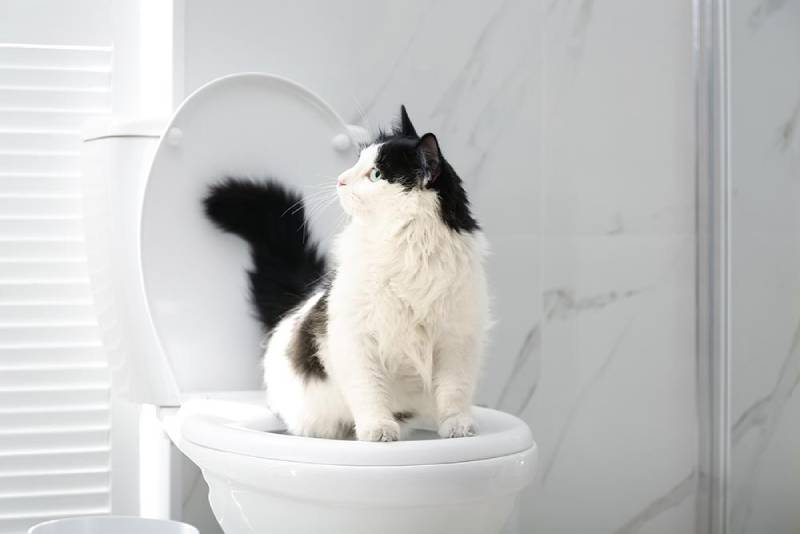What're your thoughts with regards to How to Dispose of Cat Poop and Litter Without Plastic Bags?

Intro
As feline owners, it's essential to bear in mind exactly how we deal with our feline buddies' waste. While it may appear hassle-free to purge pet cat poop down the commode, this technique can have detrimental consequences for both the setting and human health and wellness.
Alternatives to Flushing
Thankfully, there are safer and much more responsible means to throw away cat poop. Take into consideration the complying with alternatives:
1. Scoop and Dispose in Trash
One of the most typical technique of dealing with pet cat poop is to scoop it right into an eco-friendly bag and throw it in the garbage. Be sure to utilize a specialized trash scoop and deal with the waste quickly.
2. Use Biodegradable Litter
Opt for biodegradable pet cat litter made from materials such as corn or wheat. These clutters are eco-friendly and can be safely gotten rid of in the trash.
3. Bury in the Yard
If you have a backyard, take into consideration burying cat waste in a marked location away from veggie gardens and water resources. Make certain to dig deep enough to avoid contamination of groundwater.
4. Install a Pet Waste Disposal System
Buy an animal waste disposal system especially designed for feline waste. These systems utilize enzymes to break down the waste, decreasing odor and environmental effect.
Health and wellness Risks
Along with environmental worries, purging feline waste can also posture health dangers to human beings. Feline feces might consist of Toxoplasma gondii, a bloodsucker that can cause toxoplasmosis-- a potentially serious illness, especially for expectant females and individuals with weakened immune systems.
Environmental Impact
Flushing cat poop introduces dangerous virus and parasites into the supply of water, presenting a substantial threat to aquatic environments. These impurities can adversely influence aquatic life and concession water top quality.
Verdict
Liable pet possession expands past providing food and sanctuary-- it additionally involves correct waste monitoring. By avoiding purging feline poop down the bathroom and selecting alternate disposal techniques, we can reduce our environmental footprint and protect human health.
Why Can’t I Flush Cat Poop?
It Spreads a Parasite
Cats are frequently infected with a parasite called toxoplasma gondii. The parasite causes an infection called toxoplasmosis. It is usually harmless to cats. The parasite only uses cat poop as a host for its eggs. Otherwise, the cat’s immune system usually keeps the infection at low enough levels to maintain its own health. But it does not stop the develop of eggs. These eggs are tiny and surprisingly tough. They may survive for a year before they begin to grow. But that’s the problem.
Our wastewater system is not designed to deal with toxoplasmosis eggs. Instead, most eggs will flush from your toilet into sewers and wastewater management plants. After the sewage is treated for many other harmful things in it, it is typically released into local rivers, lakes, or oceans. Here, the toxoplasmosis eggs can find new hosts, including starfish, crabs, otters, and many other wildlife. For many, this is a significant risk to their health. Toxoplasmosis can also end up infecting water sources that are important for agriculture, which means our deer, pigs, and sheep can get infected too.
Is There Risk to Humans?
There can be a risk to human life from flushing cat poop down the toilet. If you do so, the parasites from your cat’s poop can end up in shellfish, game animals, or livestock. If this meat is then served raw or undercooked, the people who eat it can get sick.
In fact, according to the CDC, 40 million people in the United States are infected with toxoplasma gondii. They get it from exposure to infected seafood, or from some kind of cat poop contamination, like drinking from a stream that is contaminated or touching anything that has come into contact with cat poop. That includes just cleaning a cat litter box.
Most people who get infected with these parasites will not develop any symptoms. However, for pregnant women or for those with compromised immune systems, the parasite can cause severe health problems.
How to Handle Cat Poop
The best way to handle cat poop is actually to clean the box more often. The eggs that the parasite sheds will not become active until one to five days after the cat poops. That means that if you clean daily, you’re much less likely to come into direct contact with infectious eggs.
That said, always dispose of cat poop in the garbage and not down the toilet. Wash your hands before and after you clean the litter box, and bring the bag of poop right outside to your garbage bins.
https://trenchlesssolutionsusa.com/why-cant-i-flush-cat-poop/

I am very interested in Don’t flush cat feces down the toilet and I hope you enjoyed our entry. In case you enjoyed reading our page please remember to share it. I value reading our article about How to Dispose of Cat Poop and Litter Without Plastic Bags.
Click Here
Comments on “Avoid Plumbing Problems: Don't Flush Cat Poop Down Your Toilet - Expert Advice”